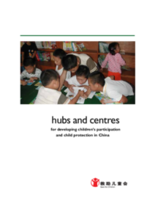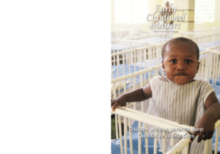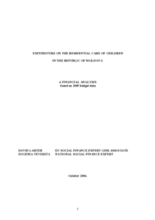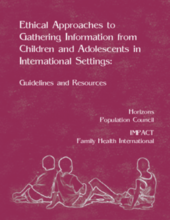Displaying 13791 - 13800 of 14347
Documenting shifting attitudes on adoption in India. Highlights persistent difficulties in national policy reform.
Description and findings of a pilot survey designed to monitor and evaluate national responses for children orphaned and made vulnerable by HIV/AIDS. Shows that over 99% of all children live in family care.
A participatory report of concerns raised by children affected by HIV/AIDS in central China. Uses children’s responses to identify child vulnerabilities and suggest appropriate future action.
Focuses on the general principles and actions for developing children’s centres in China. Centres would help initiate national child protection services and children’s participation.
Collection of articles highlighting suggestions on how to improve existing mechanisms for providing adequate care. Major article on the current state of international thinking on children without parental care.
Reports on the status of children living in residential facilities in Nepal. Includes detailed survey instruments in appendicies.
Reports on the financial costs of residential care for children in the Republic of Moldova. Highlights significant financial inefficiencies and advocates for closure of residential institutions.
Practical guidelines emphasizing the importance of and rationale for ethical standards in child-related research. Annexes include country-specific resources and example documents.
Guidance on planning and implementation of child-specific disarmament, demobilization and reintegration (DDR) programming in a peacekeeping environment. Includes definitions, roles for child protection agencies, and key programming considerations on prevention of recruitment.
This study explores four guiding questions: First, what approaches have international organizations developed regarding youth? Second, on which assumptions about youth and their role in violent conflicts are they based? Third, how do the different approaches affect program development, and, fourth, are they are compatible?








